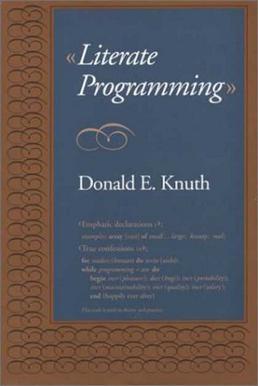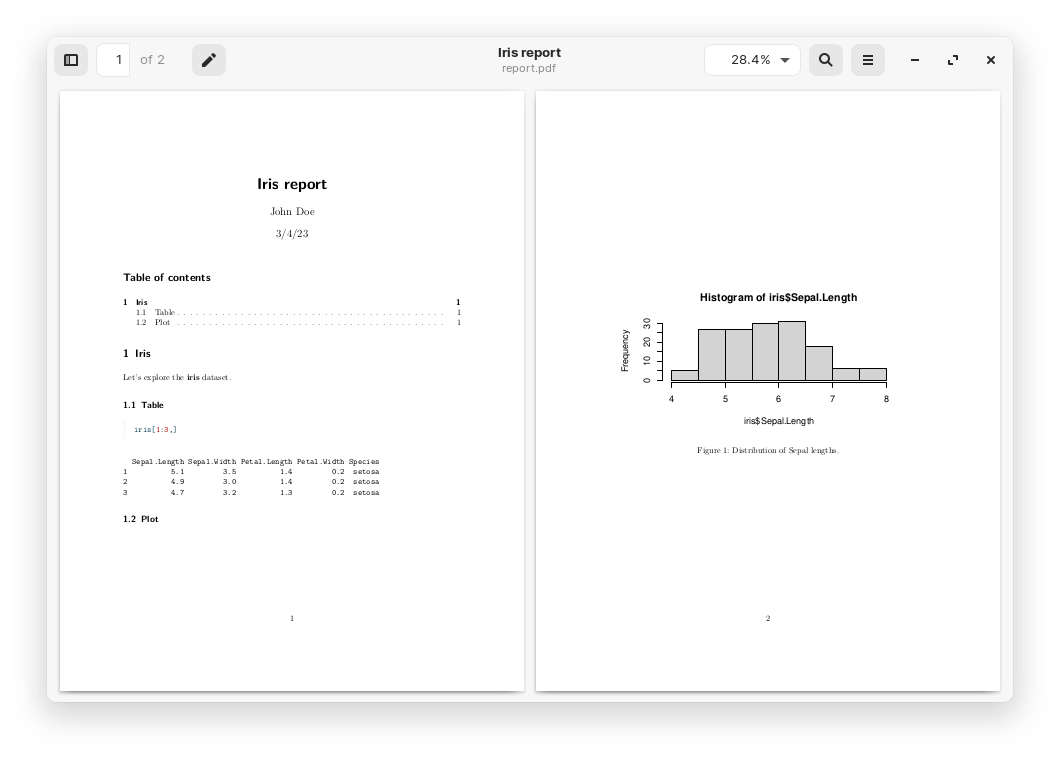[1] "Mon Jun 10 07:34:32 2024"Literate programming with Quarto
RaukR 2024 • Advanced R for Bioinformatics
Roy Francis
21-Jun-2024
Quarto
An open-source scientific and technical publishing system built on Pandoc
- Command-line tool enabling weaving code and documentation using Python, R, Julia, and Observable.
- Supports Knitr (plain text, markdown) or Jupyter engines.
- Supports many IDEs
- RStudio
- JupyterLab
- VS Code
- Neovim
- Numerous output formats
- Documents (HTML, PDF, MS Word)
- Presentations (RevealJS, Powerpoint, Beamer)
- Websites, Blogs, e-Books
- Interactive (ObservableJS, Shiny)
- Features and components
- Scientific markdown
- Tables & Figures
- Equations
- Citations
- Call-Out
- Layout
Quarto

- Literate programming: Combining code with narrative
- Reproducible research
- Documentation and reporting
- Websites, Presentations, e-books, PDFs …

Installation
- Install the latest quarto executable
- R package quarto is a wrapper that runs quarto from R
- If using RStudio, you need a version v2022.07.1 or newer
- Visual Studio Code along with quarto extension is a great option too


Quarto Notebook
- Create a quarto document, ie; a file that ends in
.qmd- In RStudio, File > New File > Quarto Document
- Add YAML matter to top
---
title: "This is a title"
format: html
---- Text & visual editor
Render to PDF format
Requires LaTeX installation
- Default engine is xelatex
- A lightweight option is R package tinytex
- Change
pdf-engineas needed
Change YAML options

For PDF options, see here
Presentation
- Create presentations as HTML (RevealJS) or Powerpoint
- Change format to
revealjs

For RevealJS options, see here
Quarto document anatomy
Quarto document anatomy

Metadata (YAML)
Text (Markdown)
Code (R, Python, Julia, Observable)
Literate programming is natural language interspersed with programming code for the purpose of documentation, reproducibility and accessibility particularly relevant in data science.
YAML metadata
- Yet Another Markup Language (YAML)
---
key: value
---- 2 space indentation
format:
html:
smooth-scroll: true- Strings
description: "This report contains..."- Multiline string (Literal/Folded)
description: |
This is
a multiline
stringdescription: >
This is
a multiline
string- Arrays
items: [ 1, 2, 3, 4, 5 ]
names: [ "one", "two", "three" ]
names:
- "one"
- "two"
- "three"- Dictionary arrays
items:
- things:
thing1: huey
things2: dewey
thing3: louie
- other things:
key: valueYAML metadata
---
title: "Iris report"
author: "John Doe"
date: "4-Mar-2023"
format:
html:
toc: true
number-sections: true
execute:
echo: false
warning: false
---
## Iris
Let's explore the **iris** dataset.
### Table
```{r}
#| echo: true
iris[1:3,]
```
### Plot
```{r}
#| label: fig-hist-sepal
#| fig-cap: "Distribution of Sepal lengths."
#| fig-height: 3
hist(iris$Sepal.Length)
```
YAML metadata
title: Report
subtitle: Topic
date: today
author: "John Doe"
format:
html:
toc: true
toc-depth: 3
number-sections: true
code-fold: true
df-print: paged
execute:
eval: true
echo: false
warning: false
message: false
freeze: trueMarkdown
Human readable markup
### Heading 3
#### Heading 4
*italic text*
**bold text**
`code text`
~~strikethrough~~
2^10^
2~10~
$2^{10}$
$2_{10}$ Heading 3
Heading 4
italic text
bold text
code text
strikethrough
210
210
\(2^{10}\)
\(2_{10}\)
$\sum\limits_{n=1}^{10} \frac{3}{2}\cdot n$
- bullet point
Link to [this](somewhere.com)

{width="50%"}RMarkdown
- Markdown + embedded R chunks
- RMarkdown mostly uses Pandoc markdown
- R code can be executed inline
Today’s date is `r date()`
Today’s date is Mon Jun 10 07:34:32 2024
- R code can be executed in code chunks
- By default, input source code and output results are displayed.
RMarkdown • Chunk options
- Setting chunk options
- Chunk options define how chunks behave
eval: falseto not evaluate a code chunkecho: falseto hide input codeoutput: trueto show output,asisto skip stylingwarning: falsehides warninsmessage: falsehides messageserror: trueshows error message and continues code executioninclude: falsesupresses all output
- Other chunk options include figure options and captions
Rendering
- Live preview
- From R console
quarto::quarto_preview("report.qmd") - From terminal
quarto preview report.qmd
- From R console
- Render
- Interactively using the Render button
- From R console
quarto::quarto_render("report.qmd") - From terminal
quarto render report.qmd
How it all works
quarto render index.qmd
flowchart LR input-md(YAML + Markdown\n.md) --> engine-md([MARKDOWN engine]) --> markdown(Markdown\n.md) input-qmd(YAML + Markdown + Code\n.qmd, .rmd) --> engine-knitr-a([KNITR engine\nR, Python, Julia, Bash]) --> markdown input-jupyter(JupyterLab\n.ipynb) --> engine-jupyter([JUPYTER engine\nPython]) --> markdown input-rnw(YAML + Markdown + Code\n.qmd, .rnw) --> engine-knitr-b([KNITR engine\nR, Python, Julia, Bash]) --> tex(Tex\n .tex) markdown --> render([RENDER\nPandoc Lua]) tex --> render render --> output-md(Markdown\nGFM, Docusaurus) render --> output-html(Reports, Websites, RevealJS slides, Blogs, Manuscripts ...\n.html) render --> output-pdf(PDF, Beamer slides\n.pdf) render --> output-docx(Word\n.docx) render --> output-pptx(Powerpoint\n.pptx) render --> output-wikis(Wikis) output-html --> publish([PUBLISH]) --> hosting(Github pages\n Quarto pub\n Netlify) publish --> confluence(Confluence)
Parameterized reports
- Parameters can be passed into a document during rendering
- Define parameters/defaults in YAML
---
title: "My Document"
params:
alpha: 0.1
ratio: 0.1
---- Access parameters as such
- Pass parameters through command-line or params file
quarto render document.qmd -P alpha:0.2 -P ratio:0.3
For more parameter options, see here
Projects
- Render all files as a project
- Share YAML configuration across formats
- Examples of project: website, book
- Defined in
_quarto.yml
project:
output-dir: _output
toc: true
number-sections: true
format:
html:
css: styles.css
pdf:
documentclass: report
margin-left: 30mm- Directory level metadata is also allowed
- Defined in
_metadata.yml
format:
revealjs:
menu: false
progress: false
search: false- YAML merging priority:
root < directory level < document - Render all files:
quarto render
Interactive documents
- Make documents interactive using htmlwidgets, Shiny or ObservableJS
- ObservableJS and htmlwidgets run in the browser
- Shiny generally requires a server
Interactive documentation
htmlwidgets
ObservableJS
Quarto supports OJS for interactive visualizations in the browser
ojsdata = transpose(ojsd)
viewof x = Inputs.select(Object.keys(ojsdata[0]), {value: "sepal_length", multiple: false, label: "X axis"})
viewof y = Inputs.select(Object.keys(ojsdata[0]), {value: "sepal_width", multiple: false, label: "Y axis"})
Plot.plot({
marks: [
Plot.dot(ojsdata, {
x: x, y: y, fill: "species",
title: (d) => `${d.species} \n Petal length: ${d.petal_length} \n Sepal length: ${d.sepal_length}`})
],
grid: true
})Publish
Quarto supports directly publishing to several popular services
- Quarto Pub: Free public publishing for Quarto documents, websites, and books
- GitHub pages
- Netlify
- Confluence
quarto publish quarto-pub_publish.ymlstores information
- source: project
quarto-pub:
- id: "5f3abafe-68f9-4c1d-835b-9d668b892001"
url: "https://njones.quarto.pub/blog"Publishing documentation
Quarto from the terminal
> quarto --help
Commands:
render - Render files or projects to various document types.
preview - Render and preview a document or website project.
serve - Serve a Shiny interactive document.
create - Create a Quarto project or extension
create-project - Create a project for rendering multiple documents
convert - Convert documents to alternate representations.
pandoc - Run the version of Pandoc embedded within Quarto.
run - Run a TypeScript, R, Python, or Lua script.
add - Add an extension to this folder or project
install - Installs an extension or global dependency.
publish - Publish a document or project. Available providers include:
check - Verify correct functioning of Quarto installation.
help - Show this help or the help of a sub-command. > quarto --version
1.4.549Extending Quarto
- Official quarto extensions
- Awesome Quarto

Acknowledgements
Getting to know Quarto, Julia Müller, R-Ladies Freiburg 2022
Welcome to Quarto, Tom Mock, Posit Meetup 2023
Thank you! Questions?
_
platform x86_64-pc-linux-gnu
os linux-gnu
major 4
minor 3.2 2024 • SciLifeLab • NBIS • RaukR
Compared to Rmd
- Quarto is a command-line tool independent of R
- Supports multiple languages seamlessly (R, Python, Julia, Observable)
- YAML options maybe slightly different in quarto. Quarto uses hyphens instead of underscores.
toc_depthbecomestoc-depthnumber_sectionsbecomesnumber-sectionscode_foldingbecomescode-fold
- Chunk options are specified inside the chunk like
#| echo: falserather thanr{echo=FALSE} - Many more chunk options are available including figure captions and layout
- CSS classes are easier to use using
:::notation - Many additional functionality out of the box
- Page layouts
- Figure layouts, Figure captions and numbering
- Call-Outs
- Cross referencing, Citation, Bibliography
- Margin content
- Quarto supports htmlwidgets in R and jupyter widgets for Python/Julia
- Client-side interactivity using ObservableJS
Output formats
| Rmd | Quarto |
|---|---|
| html_document | html |
| pdf_document | |
| word_document | docx |
| beamer_presentation | beamer |
| powerpoint_presentation | pptx |
| revealjs | revealjs |
| xaringan | |
| distill/tufte | quarto article layout |
| html_document2 | quarto crossref |
| pdf_document2 | quarto crossref |
| word_document2 | quarto crossref |
| blogdown/distill | quarto website/quarto blog |
| bookdown | quarto books |
| shiny documents | quarto interactive documents |
| pagedown | |
| rticles | |
| flexdashboard |

